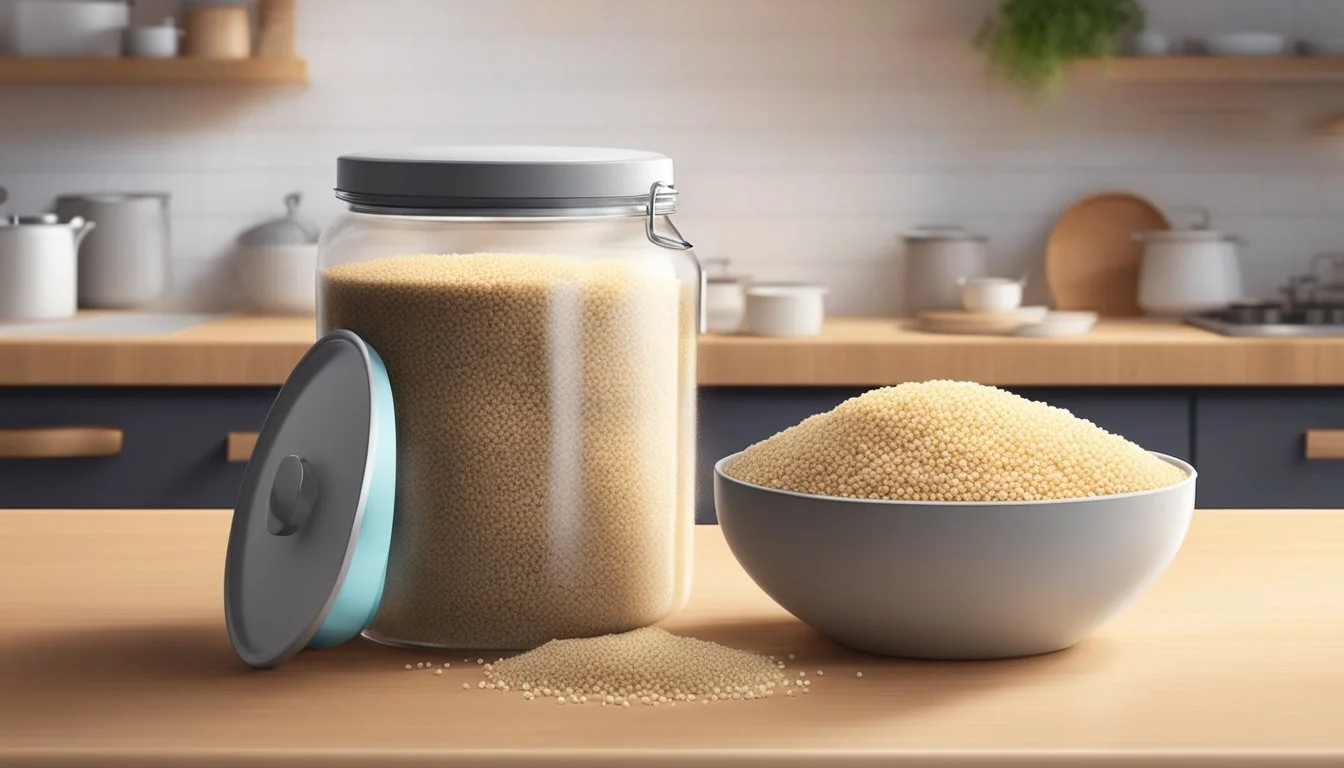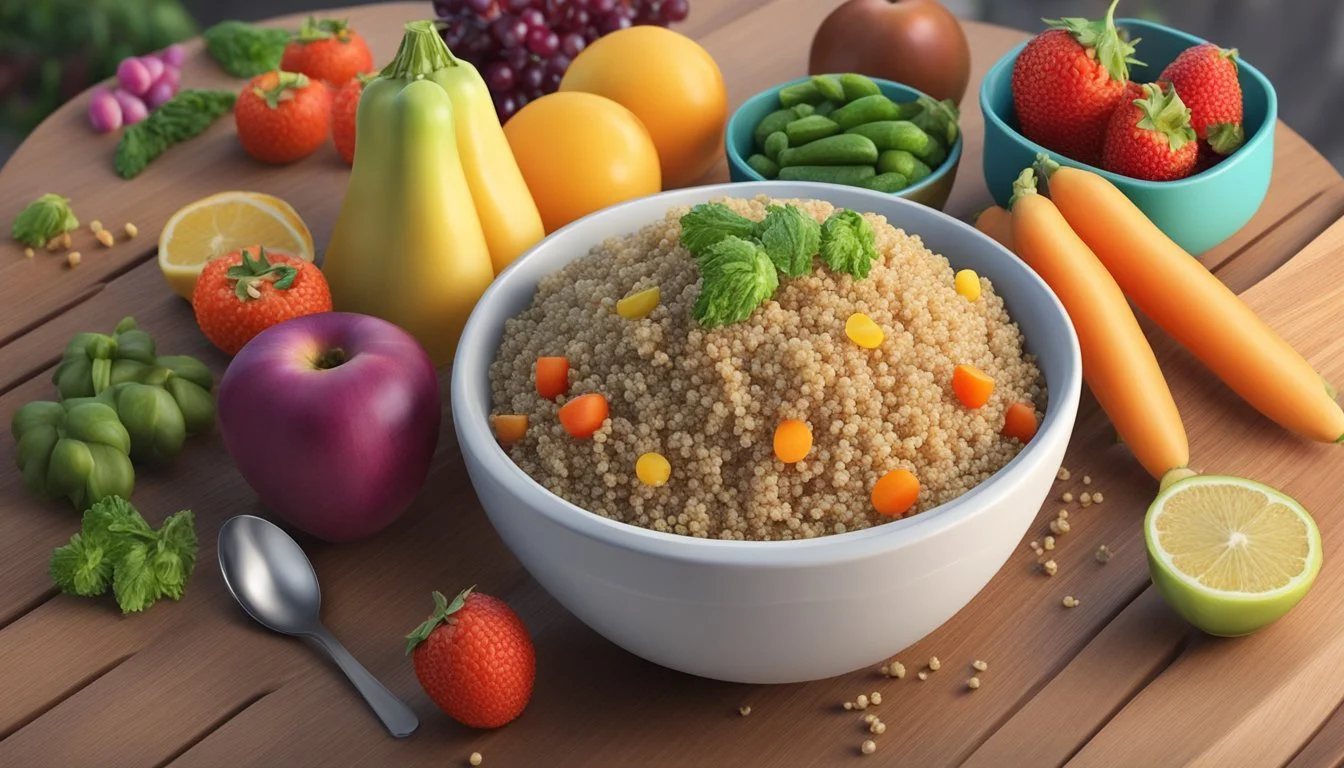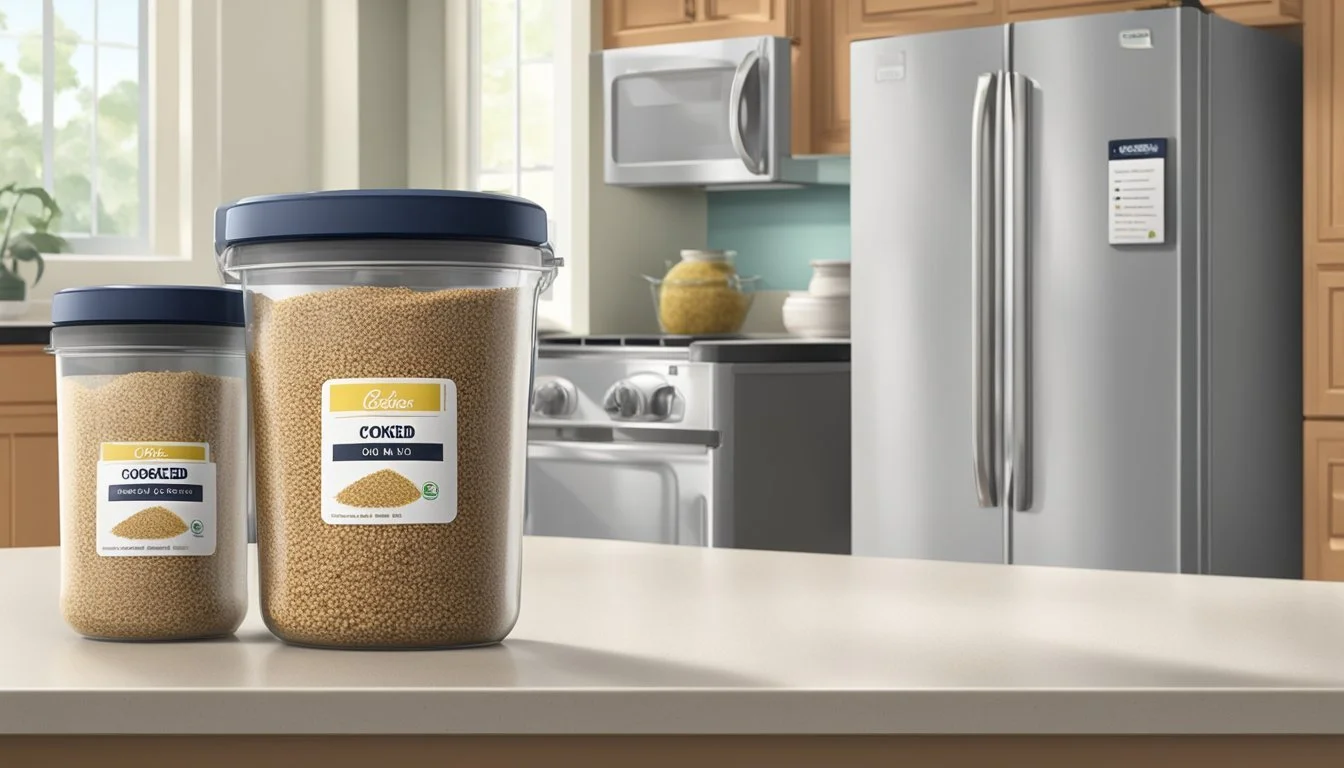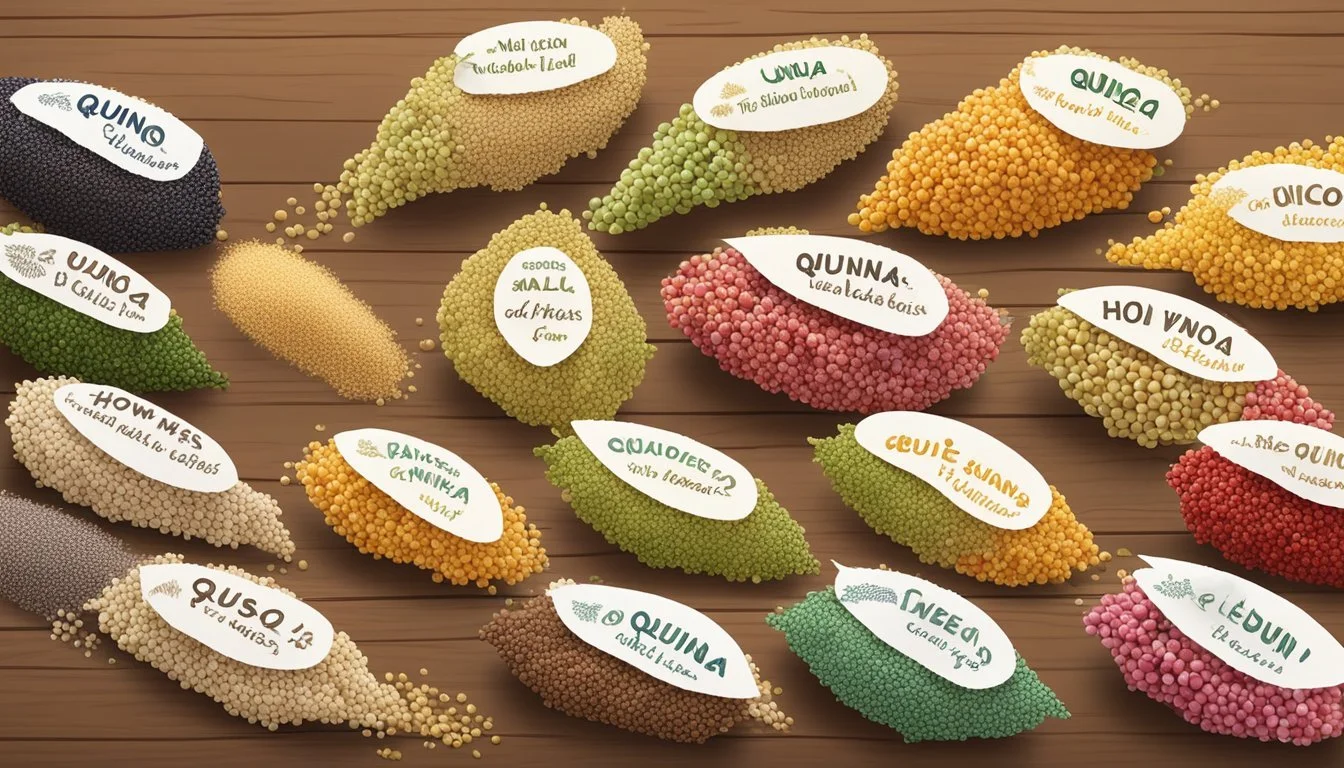How Long Does Cooked Quinoa Last?
Shelf Life and Storage Tips
Quinoa, (What wine goes well with quinoa?) a seed that has gained popularity as a superfood, is lauded for its high nutritional value. Rich in protein, fiber, and essential amino acids, it also boasts a notable content of iron, vitamins, and minerals. This gluten-free grain alternative fits seamlessly into various diets, making it a favorite among vegan and health-conscious eaters alike. As more individuals integrate quinoa into their meals, understanding its shelf life, particularly when cooked, is essential for both safety and preserving its nutritional benefits.
Properly storing cooked quinoa is key to maintaining its quality and extending its usability. When stored in the refrigerator under the right conditions, cooked quinoa can remain fresh and safe to consume for about a week. For extended preservation, freezing is an effective method, potentially retaining the quality of cooked quinoa for eight to twelve months. The versatility of quinoa, included in whole grain diets, allows it to be used in a myriad of recipes from salads and side dishes to omelets and even as a base for vegan burger patties.
Nutritional Profile and Health Benefits
Quinoa is revered for its balanced nutritional content, offering a rich supply of protein, fiber, vitamins, and minerals. It serves as an excellent food choice for various diets due to its comprehensive nutrient profile and gluten-free nature.
Protein and Amino Acid Content
Quinoa is a complete protein source, meaning it contains all nine essential amino acids that the human body cannot synthesize on its own. A single cup of cooked quinoa contains approximately 8 grams of protein, which is notably higher than similar grains.
Fiber and Digestive Health
High in dietary fiber, quinoa promotes digestive health. One cup of cooked quinoa provides around 5 grams of fiber, aiding in digestion and contributing to a feeling of fullness, which can be beneficial for weight management.
Minerals and Vitamins
Quinoa is a good source of multiple essential vitamins and minerals. It is rich in iron, which is crucial for carrying oxygen in the blood, and magnesium, important for muscle and nerve function. Additionally, quinoa contains calcium, which supports bone health, and B-vitamins, which are vital for energy metabolism.
Quinoa for Special Diets
Quinoa is naturally gluten-free, making it a safe and nutritious grain alternative for people with celiac disease or gluten sensitivity. It's also a favored ingredient in vegan diets due to its high protein content compared to other plant foods.
Storing Cooked Quinoa
Proper storage of cooked quinoa is critical to maintain its freshness and extend its shelf life. Here are the essential guidelines for storing cooked quinoa safely.
Refrigeration and Shelf Life
Cooked quinoa should be placed in the fridge within two hours of cooking to prevent bacterial growth. It will last in the refrigerator for 5 to 7 days if stored in an airtight container.
Freezing Cooked Quinoa
For longer storage, freeze cooked quinoa. Frozen quinoa can be kept for 8 to 12 months in a freezer-safe container. Be sure to cool it completely before freezing to minimize texture changes.
Pantry and Room Temperature
Quinoa should not be kept at room temperature once cooked, as it can spoil quickly due to moisture and warmth. Uncooked quinoa can last up to a few years if kept in a cool, dry place.
Tips for Best Storage Practices
Use airtight containers or resealable plastic bags.
Remove as much air as possible before sealing to prevent moisture build-up.
Keep the quinoa dry and do not store with foods with strong odors.
Identifying Spoilage
Spoiled quinoa may have mold, off odors, or a slimy texture. Any of these signs mean the quinoa should be discarded to avoid health risks.
Shelf Life Extension Techniques
Cool cooked quinoa to room temperature promptly before refrigerating.
For recipes, use the oldest quinoa first (first in, first out method).
Temperature and Environmental Factors
Storing quinoa properly involves controlling environmental factors such as temperature and moisture. The fridge should be at or below 40°F (4°C), and the freezer should be at 0°F (-18°C) for optimal food preservation.
Preparing and Cooking Quinoa
Preparing quinoa properly is essential to ensure the best texture and flavor in your finished dish. This section guides you through rinsing and soaking, cooking methods, and achieving the ideal consistency to incorporate quinoa successfully into various recipes.
Rinsing and Soaking
Before cooking quinoa, it is important to rinse it thoroughly to remove saponins, a natural compound that can impart a bitter taste. Place the dry quinoa in a fine-mesh strainer and rinse under cold water for at least 30 seconds, swishing with your fingers. Although some packaged quinoa is pre-rinsed, an additional rinse ensures any remaining saponins are removed.
Cooking Methods
Quinoa can be cooked using several methods:
Saucepan: Combine 1 part quinoa with 2 parts water in a saucepan, bringing to a boil, then cover and simmer for about 15 minutes until the water is absorbed.
Microwave: In a microwave-safe dish, cook quinoa and water covered on high for 6 minutes, stir, then cook for another 2 minutes.
Steaming: Use a steamer basket over boiling water, covering the quinoa for about 15 minutes.
Regardless of the method, let the quinoa sit covered for 5 additional minutes after cooking to ensure fluffiness.
Texture and Consistency
The ideal texture of cooked quinoa is tender yet chewy, and each grain should be distinct and fluffy. Cooking quinoa for the proper length of time is key to avoiding a mushy or crunchy texture. After steaming, a fork can be used to fluff the quinoa, which helps separate the grains and release steam, preventing overcooking.
Quinoa in Recipes
Quinoa is incredibly versatile in recipes:
Salads: Let it cool before adding to salads for a nutritious boost.
Soups: Add it either cooked or uncooked, depending on the recipe's cooking time.
Side Dish: Toss with lemon vinaigrette for a tangy side.
Cooked quinoa can also be incorporated into a variety of quinoa recipes, such as stuffed peppers or breakfast bowls, adding a healthful, protein-rich component to any meal.
Health and Safety Considerations
When storing cooked quinoa, it is critical to adhere to safety guidelines to prevent foodborne illness and ensure quality. Understanding temperature thresholds for bacteria growth, recognizing allergy information, and knowing how to correctly reheat quinoa are all integral to maintaining its safety and quality.
Food Safety Best Practices
Proper storage and handling are essential to extending the shelf life of cooked quinoa and minimizing the risk of foodborne illness. Below are key practices to follow:
Temperature: Cooked quinoa should be refrigerated within two hours of cooking to prevent bacterial growth. It should be stored at a temperature below 40°F (4°C).
Storage: Use an airtight container to keep leftover quinoa in the refrigerator to maintain freshness and minimize moisture, which can encourage spoilage.
Best By Date: For best quality, consume cooked quinoa within 5 to 7 days of refrigeration. If frozen, consume within 8 to 12 months to avoid freezer burn and textural changes, though it remains safe to eat beyond this timeframe.
Allergies and Sensitivities
Quinoa, while gluten-free and a suitable alternative for those with gluten intolerances, can have allergenic properties:
Gluten-Free: Quinoa is naturally gluten-free, making it an excellent choice for people with celiac disease or gluten sensitivity.
Sensitivities: Some individuals may experience sensitivities to quinoa. If symptoms such as itching or gastrointestinal discomfort occur, consult a healthcare professional.
Quality and Consumption
Determining the quality of quinoa is essential for safe consumption. Consider the following points:
Freshness: Freshly cooked quinoa has a fluffy texture and a mild, nutty flavor. Over time, it can lose its quality and may develop an off smell or taste, indicating spoilage.
Spoilage: If the quinoa appears moldy, discolored, or has an unpleasant odor, it should be discarded.
Reheating Stored Quinoa
Reheating cooked quinoa properly ensures both safety and quality preservation:
Reheating Methods: Use a microwave-safe container when reheating quinoa in the microwave. Ensure it reaches a temperature of 165°F (74°C) to kill any potential bacteria.
Leftovers: Stir quinoa several times during reheating to distribute heat evenly, and only reheat the portion you intend to eat, as repeated reheating can compromise the quality.
Versatility of Quinoa in Diets
Quinoa, often hailed as a superfood, holds a significant place in various diets due to its high nutritional profile. It is a versatile ingredient rich in protein, fiber, and is naturally gluten-free, making it ideal for a wide range of dishes from salads to hot meals.
Quinoa as a Rice Substitute
Quinoa can be effortlessly incorporated as a healthier alternative to rice. Its fluffy texture and nutty flavor make it a preferred choice for those seeking to boost nutritional content with added protein and fiber. It cooks similarly to rice and can be used in dishes such as stir-fries, sushi, and pilafs, maintaining a comparable texture and ability to absorb flavors.
Integrating Quinoa in Meals
Incorporating quinoa into meals is straightforward and beneficial for enhancing nutrition. It can be used as a base in salads, added to soups for a hearty texture, or served as a side dish. Some simple yet popular quinoa recipes include quinoa bowls with mixed vegetables, quinoa porridge, and stuffed peppers with quinoa.
Quinoa for Vegans and Vegetarians
For vegans and vegetarians, quinoa serves as an important source of plant-based protein. It contains all nine essential amino acids, which is rare for plant seeds. Quinoa can be the main component in vegan burgers, used in salads, or as a filler in wraps and sandwiches, providing a satisfying and complete protein source in meals.
Gluten-Free Recipes and Uses
Quinoa's gluten-free attribute allows it to be a staple in gluten-free diets. It can replace wheat-based grains in recipes like tabbouleh, making quinoa an essential component for gluten-free baking, breakfast cereals, and as a thickener in soups and sauces. Quinoa flour and flakes are also popular gluten-free options for various culinary uses.
Cultural and Historical Background
Quinoa's ascent as a global superfood is underpinned by a legacy stretching back thousands of years and its subsequent integration into world cuisines and trade.
Origin and Domestication
Quinoa is indigenous to the Andean region of South America, where it has been a food staple for approximately 3,000 to 5,000 years. It was a central part of the diet for pre-Columbian civilizations, with the Incas considering it the "mother of all grains." Quinoa was domesticated in the regions of present-day Bolivia, Chile, and Peru.
Quinoa in World Cuisines
The versatility of quinoa has led to its incorporation into a myriad of world cuisines. It gained popularity in the United States and beyond a few years ago, with restaurants using it as a health-conscious alternative to traditional grains. Its mild, nutty flavor and ease of cooking allow it to adapt well to various dishes.
Global Quinoa Trade
Quinoa's rise in the global health food scene has spurred an increase in trade from South American nations to markets worldwide. The increased demand led to a spike in prices, making it a significant economic crop for Andean countries. This growth has had both positive and negative effects on local economies and food security in the regions where it is produced.
Varieties of Quinoa
Quinoa, often referred to as a superfood, comes in a variety of types, each with its unique properties and uses. The focus here is on the three widely recognized colors—red, white, and black—alongside its classification and comparison with other seeds and grains.
Red, White, and Black Quinoa
Red Quinoa: It has a rich, nutty flavor and holds its shape well during cooking, making it suitable for cold salads. White Quinoa: Also known as ivory quinoa, is the most common type. It has the mildest flavor and cooks up fluffier than other varieties. Black Quinoa: This variety has an earthy taste and a slightly crunchier texture compared to red and white quinoa. It's ideal for adding a pop of color and texture to dishes.
Quinoa as a Pseudo-Cereal
Quinoa is classified as a pseudo-cereal, not a true cereal grain like wheat or oats, but a seed from the Chenopodium quinoa plant. Despite this technical distinction, it is commonly prepared and consumed in a similar fashion to cereal grains due to its comparable nutritional profile and culinary applications.
Comparisons to Other Grains and Seeds
Oats: Quinoa contains more protein and dietary fiber compared to oats and lacks gluten, making it a suitable alternative for those with gluten sensitivities.
Corn: Quinoa surpasses corn in protein content and offers a complete protein source, containing all nine essential amino acids.
Nuts and Seeds: While quinoa shares some textural qualities with nuts and seeds, it remains distinct in its versatility and the ability to act as a staple in meals, much like conventional grains.
Conclusion
Cooked Quinoa
Refrigerated: 5-7 days
Frozen: 8-12 months
Products with longer or shorter shelf lives exist, and the quality might diminish over time.
When storing cooked quinoa, it's crucial to use an airtight container. Not only does it help to maintain the nutritional value of the grain, but it also prevents the absorption of other flavors and moisture that might hasten spoilage. For the best quality, one should consume refrigerated quinoa within a week.
Uncooked Quinoa
Pantry: 2-3 years
The shelf life of uncooked quinoa is extensive given that it's stored in a dry and cool place, away from direct sunlight and moisture. Uncooked quinoa usually has a 'best by' date which serves as a guideline – it is still likely to be safe and possess its nutritional value beyond this date if stored properly.
Freezing Quinoa
To extend the shelf life, cooked quinoa can be frozen. When freezing, it’s advised to portion the quinoa to ensure easy thawing and to avoid wastage. Thaw it in the refrigerator or reheat it directly from the freezer.
For the health-conscious, quinoa serves as a nutritious choice, boasting a high protein content and rich in fiber. It's critical to maintain the quality of the grain, whether cooked or uncooked, through proper storage to preserve its nutritional benefits. By adhering to these guidelines, users can ensure they get the most out of this versatile grain.







